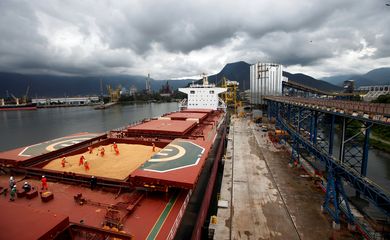Balance of trade sees $3.73 billion surplus in November

The balance of trade in November reported the third highest surplus for the month. Brazil exported $3.732 billion more than it imported, the Economy Ministry announced Tuesday (Dec. 1). This represents a 4.7 percent increase from the same month last year, when the surplus stood at $3.565 billion.

The figure is surpassed only by November 2016 ($4.75 bi surplus) and 2018 ($4.08 bi surplus). Last month, the country sold $17.531 billion overseas, down 1.2 percent according to the daily average criterion compared to the same month last year. Imports, however, plunged further, totaling $13.799 billion, down 2.6 percent, also per the daily average.
Last month’s result brings the surplus in the balance of trade to $51.159 billion for January–November. This is also the third largest outcome in the current time series for the period, and was surpassed only by January January–November 2017 ($61.992 bi surplus) and 2018 ($51.605 billion). Year-to-date this year, exports add up to $191.678 billion, down 6.1 percent from its 2019 counterpart, by the daily average. Imports totaled $140.518 billion, down 13.6 percent by the same criterion.
Most of the expansion in November’s balance is explained by the 26.93 percent growth in the daily average of exports from the extraction industry, chiefly iron ore and crude oil. This surge compensated for the 21.87 percent retraction in the daily average of sales abroad in agriculture.
After shipments were brought forward this year, soybean exports sank 70 percent in November from the same month in 2019, also according to the daily average criterion.
The manufacture industry also exported 2.92 percent less in November per the daily average compared to the same month last year. The main good impacting the reduction were fuels, down 35.5 percent, aircraft and parts, down 44 percent by the daily average.
As for imports, the reduction resulted chiefly from the plunge in crude oil purchases (-63.7%) and iron and steel structures (-49.5%).
Estimates
After the balance of trade closed out 2019 at $48.035 billion, the second highest positive balance in history, the market estimates a smaller volume in 2020 trade, as a result of the pandemic of the novel coronavirus. However, the shrinkage in imports at a higher pace than exports rose balance projections.
According to the weekly survey conducted by the Central Bank with financial institutions, market analysts forecast a surplus of $57.9 billion for this year. The Economy Ministry projects a positive balance of $55 billion for 2020.




